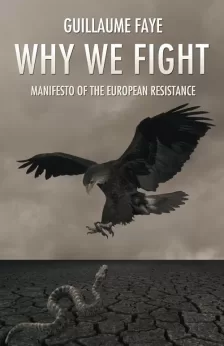Attack on a Lifeline of World Trade
The Red Sea, linked with the Suez Canal, is one of the economic hubs of global trade. More than 15% of world trade passes through this geographic bottleneck. The shock in the West was immense when, starting on 19 November 2023, fighters from the Ansar Allah movement (Supporters of God), also known as the Houthis in the West, began targeting the ships of Israel and its Western allies. The reason: Israel’s war of annihilation against the Palestinians and the threat to the Al-Aqsa Mosque in Jerusalem by the Zionist regime. While other Muslim states refrain from action due to fear of the Samson Option, the Yemenis face death. The Shiites, who belong to the Zaidi branch within Shia Islam, are considered close allies of Iran. Previously, they had successfully resisted Saudi Arabia and the West in a war of annihilation from 2015 to 2022, which led to one of the worst famines in the world. Today, they are effectively fighting against the entire West at once — and doing so successfully.
War in the Red Sea: A Response to Israel’s War of Annihilation in Palestine
Major Western shipping companies — such as Danish Maersk, French CMA CGM, and the oil company BP — subsequently started to avoid the Suez Canal and rerouted their traffic around the Cape of Good Hope. Insurance costs for ships calling at the Israeli port of Eilat increased by 250%. Global oil consumption also rose sharply as a result of the attacks, as trade routes via the Cape of Good Hope route became significantly longer. While for a long time, just the threat of attacks by the Houthis caused the West to avoid the route through the Suez Canal, the inevitable happened on 28 February 2024: for the first time, a ship, the tanker Rubymar, was sunk, and 21,000 metric tons of fertiliser sank to the bottom of the Red Sea. Even a military mission led by the USA could not overcome this threat — thus, Iran’s influence in the region grew massively, but also that of Ansar Allah, which is now considered one of the most powerful Islamic resistance groups. Their battle cry is: ‘America die! Israel die! Cursed be the Jews! Victory to Islam!’ Accordingly, the followers of God — who practice a peculiar Islamic tribal socialism that differs both from the Hollywood Islamism of ISIS and the revolutionary Islam of Iran — reject negotiation offers from the West after the Biden administration continued the war against Ansar Allah that Donald Trump had started, and again imposed sanctions on the starving Yemenis in the north of the country. In January this year, Biden designated the group as ‘designated global terrorists’.
Targeting NATO
While a US carrier group protects Israel from drones and cruise missiles from the north of Yemen, NATO fleets regularly become targets of Yemeni weapons. This also highlights the lack of combat readiness of the North Atlantic Treaty Organization: a Danish frigate suffered a malfunction in the fight against the drones of the Houthis, and two US Marines died trying to intercept an Iranian weapons shipment to the God-supporters. These successes are made possible not least by the large number of drones and missiles fired.
Beyond the Red Sea – Will the Houthis Soon Also Threaten the Indian Ocean?
Yet they remain undeterred: the conservative revolutionaries even threaten to expand the war: in addition to the Red Sea, they aim to threaten the Indian Ocean and even the Cape of Good Hope in the future, which serves many Western shipping companies as an alternative route after the blocked Suez Canal. But how can a Muslim tribal militia be capable of acting globally and striking at the heart of capitalism? Behind them stands Iran, which not only supports the fight against liberalism and Zionism in Iraq, Lebanon, and Palestine but also in Yemen. The political-religious soldiers of the Revolutionary Guards export revolution by training members of the Axis of Resistance in the use of the latest drone technology and missiles. Numerous drones — like the Wa’id model, similar to the Iranian Shahed 136 (2500 km range) — and cruise missiles allow Ansar Allah to target not only Israel but also shipping at the Horn of Africa.
Ansar Allah: Overnight from a Small Resistance Group to a Leading Member of the Axis of Resistance
Thus, the Houthis became overnight one of the most famous resistance groups of Islamic civilisation, thereby also gaining additional strategic capital in the Yemeni civil war. Since the fight against Israel is extremely popular in the Muslim world, they have attracted 16,000 new recruits since December 2023. They could use these to conquer the southern coastline and the resource-rich east of the country, which are still controlled by a pro-Western government. In their propaganda, the Yemeni warriors speak of conquering the Zaidi regions in Saudi Arabia or even of capturing the Islamic holy cities of Mecca and Medina. While this may still be wishful thinking at the moment, we should remember that the takeover of the Yemeni state by the group was also unthinkable until ten years ago. Thus, the phenomenon of Ansar Allah will continue to occupy us in the future. While the much better-known Hezbollah attempts to gain power over the Lebanese state, Ansar Allah tries to be the Yemeni state.







